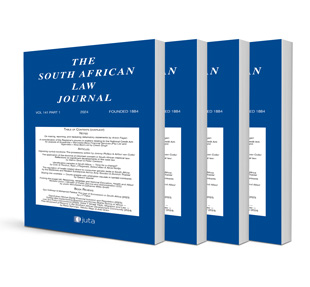
The Removal from Office of a President: Reflections on Section 89 of the Constitution
Authors Loammi Wolf
ISSN: 1996-2177
Affiliations: Research Associate, Sanlam Centre for Public Management and Governance, University of Johannesburg
Source: South African Law Journal, Volume 134 Issue 1, 2017, p. 1 – 33
Abstract
Section 89 of the Constitution regulates the removal from office of the President. The origins of the removal procedures date back to the previous constitutions at a time when the offices of the nominal head of state (State President) and the head of the executive (Prime Minister) were still separated. After the two offices were merged by the 1983 Constitution, the procedures and grounds for the removal from office of the executive President were slightly adapted, but there is little clarity on the difference between a motion of no confidence and the removal from office of the President. The lack of clarity on the nature of these powers also prevails in the 1993 and 1996 Constitutions. It is common cause that the rationale of a motion of no confidence is that the members of Parliament, who elect the leader of the executive and give him or her a mandate to govern, may withdraw that mandate when the Cabinet loses the confidence of Parliament — in both instances with a simple majority vote. It is therefore difficult to justify a two-thirds-majority requirement for the removal from office of the President for a serious violation of the Constitution or the law or for serious misconduct. It can hardly be justified in a constitutional state. The real difficulty is the way in which s 89 of the Constitution has been conceptualised: it deals with the President’s fitness to hold office and the character of the power to examine that is essentially judicial in nature. Unlike measures available to the legislature to hold the executive accountable with a censure motion, a motion of no confidence (s 102) or summons to appear before Parliament (s 56), the seriousness of removal grounds is judged in terms of the principle of proportionality, which functions as a curb on the abuse of power.